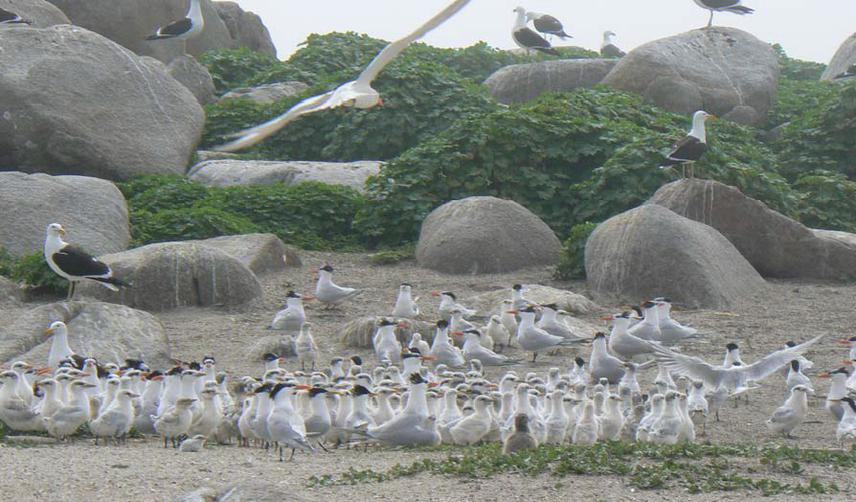Matilde Alfaro
Other projects
The aim of the Sterna-Averaves Project is to promote and work for the conservation of this colony.

In 1998, a mixed colony of Sterna maxima, S. eurygnatha and S. hirundinacea was found on Isla Verde. This is the first and only record for Uruguay and in a vast range of the Atlantic coast. We will study the breeding biology and regional migrations of its populations to determine the role of the colony in a regional context. We will use the tools of our educational program ALAS-Averaves in order to involve two local communities and we will register their cultural heritage concerning this island.
Working with the local communities will ensure a successful preservation of this Tern colony. The Isla Verde will be visited once a week from August to November, twice in July and once in December 2005. During these visits, we will make observations with binoculars and telescope, from a built hide, to a distance no shorter than 30 m. from the border of the colony. We will register the number of breeding pairs, chicks and juveniles for the three mentioned tern species and their accompanying nesting species, the number of predated eggs for each tern species, its location within the colony and the predator species responsible for it.
We will make three flights, during the breeding season, at 100-300 m over Isla Verde in order to take pictures and calculate the nest density, shape and spatial distribution of the colony. Due to the sensitivity of these birds to the human presence, which can interfere with the fidelity to the nesting site and the reproductive success, we will only work within the colony when the reproductive season is over.We will capture chicks, in order to band them, once they gather in crèches to prevent the parents from abandoning them. In order to determine the distribution and seasonal movements of the terns breeding on Isla Verde, reported recaptures will be used.
Our results will be relevant to complete the information gap and for the conservation of the “Austral Population” of S. maxima, for which survival threats from human activities have been reported. Furthermore, it has a small breeding population size with only five colonies in Argentina, one in Brazil, and one on Isla Verde, Uruguay. Considering the above we believe that the Sterna-Averaves Project is of high conservation priority in Uruguay and within the region.